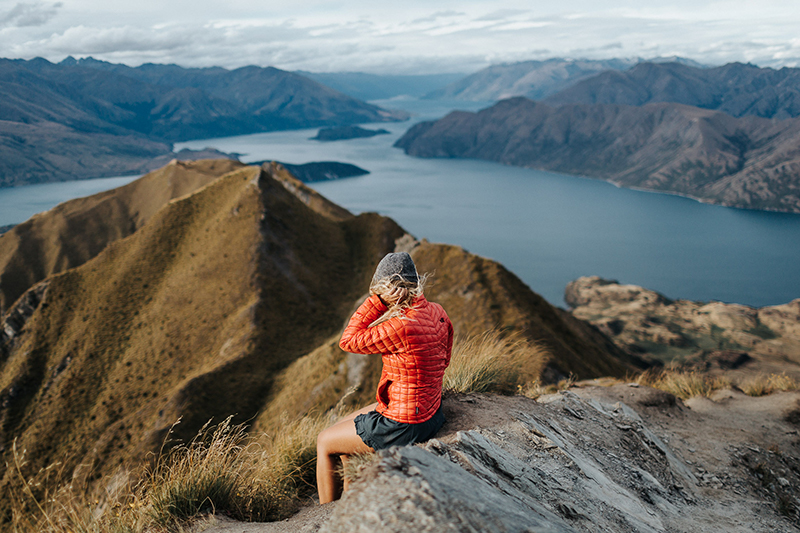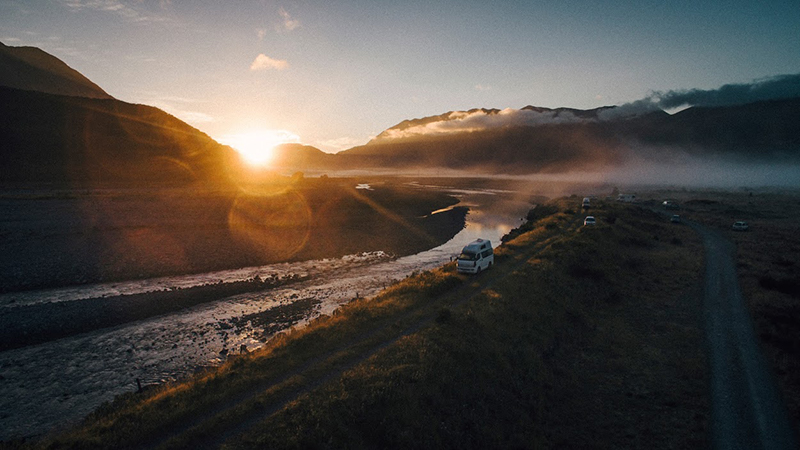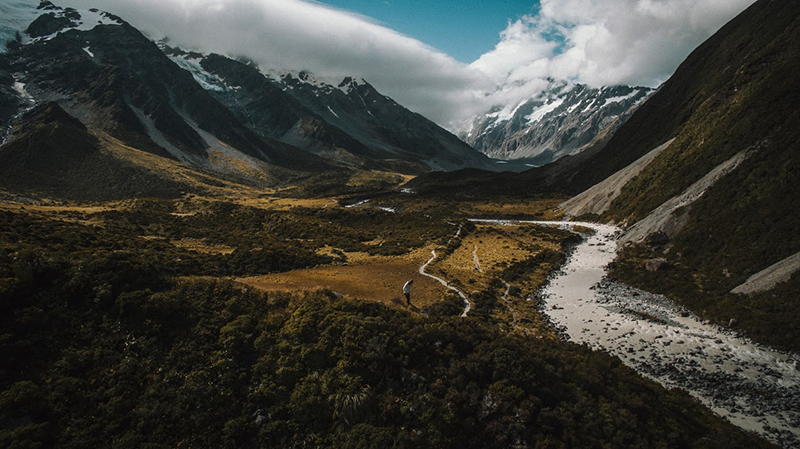SPREAD THE MAP - AUS NZ JPN from LC Pilon on Vimeo.
The first thing that hit us when traveling through New Zealand was the amount of travelers in a van. Wild camping is allowed everywhere around the country with the few exceptions of National Parks and cities. Having a self-contained certified vehicle is required for wild camping to protect the environment. That being said, many rental companies offer these types of vans and we had chosen Lucky Rentals for their good prices and the stealth appearance of their vehicles.
The CamperMate app is a useful tool to plan your trip as you go along and to avoid any stress linked to finding a parking spot; their are heavy fines for not respecting the camp areas. It works offline and gives information about gas stations, wi-fi spots, grocery stores, drinkable water and even activity options. User reviews are available for all camp spots which allowed us to pick the best ones for us. We used it daily to decide where we would spend the night.
We decided to visit NZ’s South Island as its alpine landscapes were very appealing to us. We had planned to visit the whole Island, but once we got there, we chose to slow down and deeply enjoy the chosen sites. Gasoline is also very expensive so being efficient during our trips was key. Here’s a map of our itinerary.
Route Highlights
Almost at the feet of the infamous Mount Cook, Tekapo Lake amazed us with its unique turquoise water created over the years by glacier water sediments. You can also find a huge free camping spot with bathrooms near the lake. It’s a perfect location to start your trip after landing in Christchurch and a great way to spend the night before heading to Mount Cook for unbelievable hikes.
The very small but welcoming village of Aoraki Mount Cook depends almost entirely on tourism from the National Park. One of our favorite trails and probably one of the most loved leads to Mueller Hut. 2000 steps to climb, followed by 1 hour of big rocky fields lead us to the red shelter offering a breathtaking view on the glaciers in the valley. Spending the night in this shelter is a great experience to plan ahead and book; what we forgot to do (!).
While passing through Wanaka we wanted to get to Roys Peak at 1578 m in altitude. The trail goes through enclosed sheep fields where we had to jump over the fences to cross. The view at the top is scattered with tussocks; small yellow grass bushes that are typical of New-Zealand.
Milford Sound is the main attraction of Fiordland National Park, at the southern point of the island. We visited the Fjord by boat and saw many bottlenose dolphins and fur seals along the shore. A tip: book the first morning cruise for the early bird discount and to capture the rising sun right before heading over on the Milford Sound.
Our favorite and most intense hike was Gertrude’s Saddle in Fiordland National Park. We were blessed with an overnight snowfall that was melting as the sun was rising. As we climbed, we heard a loud avalanche set off. We were able to hide behind a rocky boulder, but the avalanche stopped before reaching us. We found a different view of Milford Sound once at the end of the path.
Submerged in the wild life
It doesn’t matter if you sleep by a lake, in the middle of a field or even on the side of the road; you never know what the morning is going to bring you. At a place named Diamond Lake, we were woken up by a curious cow herd. One of them was so close that if it moved one step forward, it would have been sitting in the van, eating breakfast with us. Cows were not the only ones intrigued by our presence. Mountains parrots, also known as Keas, had the odd hobby of making their way in cars to steal shiny things. You’ve been warned!
We were lucky not to have any rainfall while visiting NZ’s South Island, aside from our passing on the West coast which is known for its humid climate. New Zealand’s landscapes keep taking our breath away. To go from a tropical forest to glaciers and from mountains to deserts in the same day is so impressive and splendid!
Frankly, the best part of travelling with a van is being outside pretty much all the time and being able to easily enjoy the nature surrounding us. The variety of landscapes never ceased to amaze us. You travel through dense forests, oceanside beaches and high-altitude glaciers in a matter of days. It is definitely an eye-opening experience worth adding to your bucket list. Travelling the Van way is also to be part of a community of untypical travellers. Bonds are easily made with vanlifers from all around the globe, all having in common a passion for discovering a new country through its unexploited corners. Find a few more photos of our trip here:
Arthur’s Pass National Park
Hooker Valley Track
Your turn to hit the road now!
Video/photos: LC Pilon
Additional photos: Philippe Émond
Story: Camille Hébert & Émilie Plamondon
















